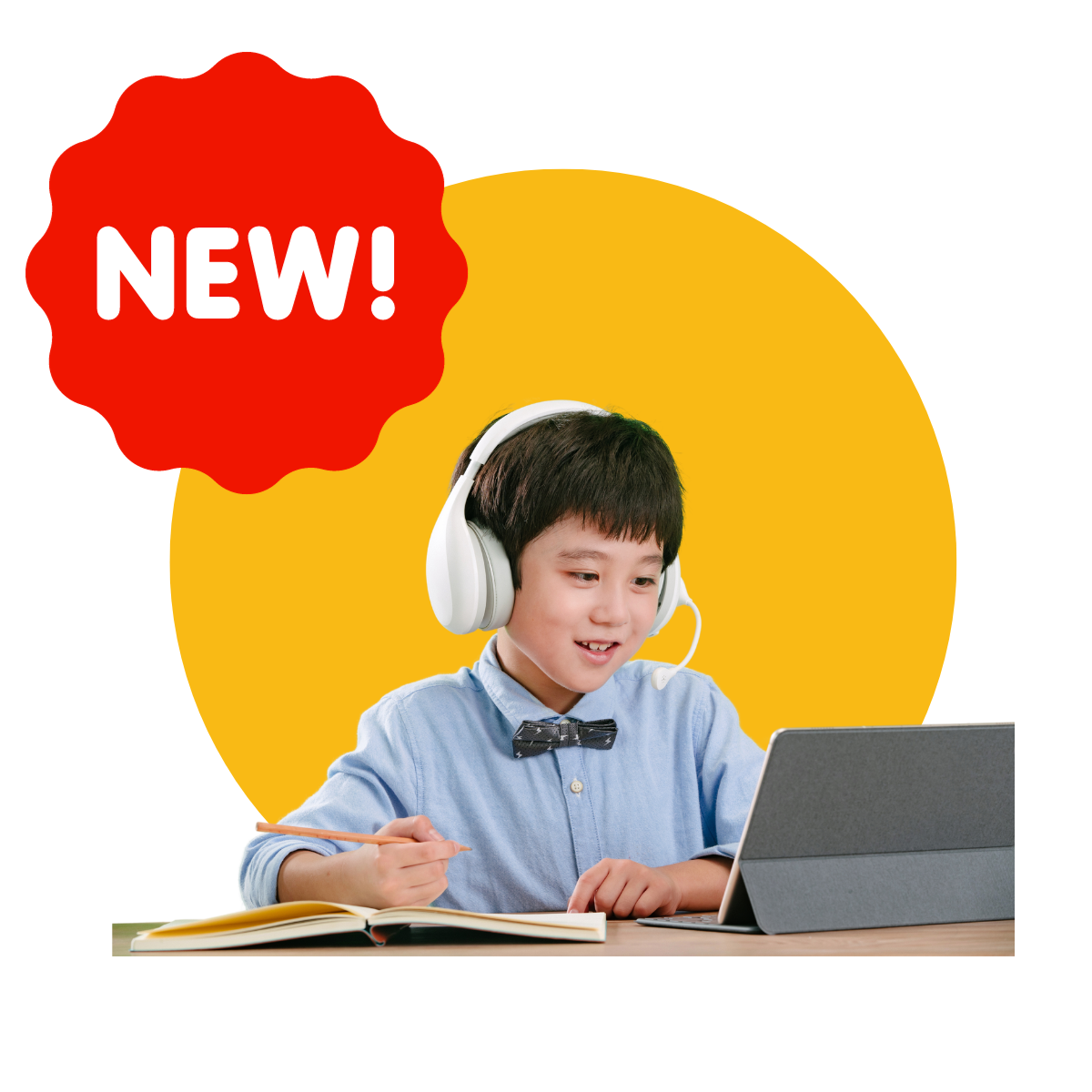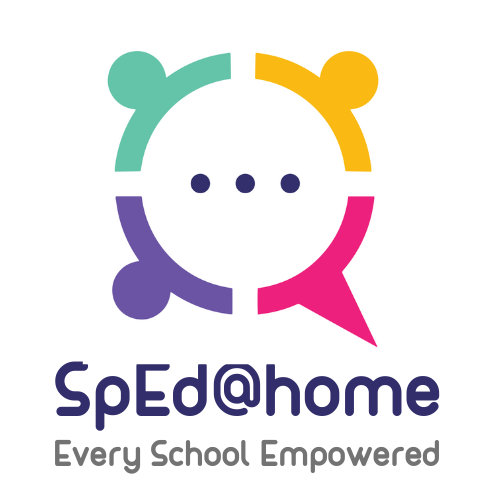Self-paced learning can be particularly beneficial for children with special needs, offering various advantages that cater to their unique learning requirements. Here are some key reasons why self-paced learning is important for children with special needs:
1. Individualized Instruction:
– Special needs children often have diverse learning styles and varying cognitive abilities. Self-paced learning allows for customized instruction, enabling each child to progress at their own pace. This flexibility ensures that the learning materials are adapted to their specific needs, promoting a more personalized and effective learning experience.
2. Reduced Anxiety and Stress:
– Traditional classroom settings may create stress and anxiety for some special needs children due to the pressure to keep up with the rest of the class. Self-paced learning reduces the stress associated with comparisons and competition, as children can take the time they need to master concepts without the fear of falling behind.
3. Increased Engagement:
– Children with special needs may struggle with attention and focus. Self-paced learning often incorporates interactive and multimedia elements, making the learning process more engaging and appealing to children with diverse learning preferences. Interactive materials can help capture and maintain their attention, leading to improved understanding and retention of information.
4. Boosted Confidence and Independence:
– Successfully completing tasks at their own pace can enhance a child’s confidence and foster a sense of independence. As they achieve milestones independently, special needs children can develop a positive self-image, which is crucial for their overall well-being and academic success.
5. Accommodation of Learning Disabilities:
– Self-paced learning can be adapted to accommodate various learning disabilities. For example, children with dyslexia may benefit from additional time to process written information, and those with attention disorders may benefit from shorter, focused learning sessions. Self-paced learning allows for the necessary adjustments to support children with different learning challenges.
6. Flexible Learning Environment:
– Children with special needs may have medical appointments, therapies, or varying energy levels. Self-paced learning provides the flexibility to schedule learning activities around these factors, allowing for a more adaptive and accommodating learning environment.
7. Continuous Progress Monitoring:
– Self-paced learning often includes features for tracking progress. Continuous monitoring allows educators and parents to identify areas of strength and weakness, enabling timely interventions and adjustments to the learning plan to meet the child’s evolving needs.
In conclusion, self-paced learning offers a more inclusive and adaptable approach that can significantly benefit children with special needs. It empowers them to take control of their learning journey, fostering a positive and supportive environment conducive to their individual growth and development.
Introduction
In the realm of education, the foundational years play a pivotal role in shaping a child’s academic journey. Sped@Home’s Homeschooling Program for Foundational Literacy and Numeracy stands as a beacon of personalized education, providing children with a robust foundation that transcends traditional boundaries. In this exploration, we delve into the transformative outcomes that emanate from the unique approach of Sped@Home’s homeschooling program.
1. Personalized Learning Unleashed
At the core of Sped@Home’s program lies the commitment to personalized learning. Traditional educational settings often grapple with catering to diverse learning styles and speeds. However, Sped@Home’s program is tailored to each child’s unique needs, ensuring that the pace and approach resonate with individual learning preferences. This personalized touch not only enhances understanding but also nurtures a love for learning.
2. Mastery of Foundational Literacy Skills
Sped@Home’s emphasis on foundational literacy skills lays the groundwork for a lifelong affinity with language. Children engaging with the program master phonics, reading comprehension, and vocabulary building. The outcomes are profound – children not only learn to read but develop a deep understanding of language structures, setting the stage for advanced literacy skills in the future.
3. Numeracy Proficiency Beyond the Basics
The homeschooling program places a strong emphasis on numeracy skills, going beyond the basics of counting and number recognition. Children delve into foundational concepts of mathematics, including shapes, patterns, and measurement. The result is a numeracy proficiency that extends into critical thinking and problem-solving, laying the foundation for mathematical success in subsequent educational stages.
4. Individualized Progress Tracking
One of the standout features of Sped@Home’s program is the meticulous tracking of individual progress. Continuous assessment tools allow educators to monitor each child’s journey in real-time. This data-driven approach ensures that interventions are timely and that the child is consistently challenged at an optimal level, fostering a sense of accomplishment and boosting confidence.
5. Holistic Development of Critical Thinking
Beyond the realms of literacy and numeracy, Sped@Home’s homeschooling program cultivates critical thinking skills. Children engage in activities and lessons that prompt them to analyze information, make connections, and solve problems independently. This holistic development of critical thinking is a testament to the program’s commitment to nurturing well-rounded individuals.
6. Parental Involvement as a Catalyst
A unique aspect of the program is the active involvement of parents. Sped@Home recognizes that the home environment is an extension of the learning space. Through workshops, resources, and continuous communication, parents are empowered to actively participate in their child’s educational journey. This collaborative approach not only reinforces learning but also strengthens the parent-child bond.
7. Cultivation of a Love for Learning
Sped@Home’s program transcends the rote memorization often associated with early education. By infusing creativity, interactive elements, and a supportive learning environment, the program cultivates a genuine love for learning. Children don’t merely absorb information; they actively engage, ask questions, and develop a curiosity that propels them forward academically.
8. Seamless Integration of Technology
Recognizing the digital era, Sped@Home seamlessly integrates technology into the learning process. The use of interactive online platforms, educational games, and multimedia resources not only makes learning enjoyable but also prepares children for a tech-centric future. The program equips students with digital literacy skills, ensuring they are comfortable navigating the technological landscape.
9. Smooth Transition to Advanced Learning
A strong foundation is not just about the present; it’s an investment in the future. Sped@Home’s program ensures a smooth transition for children as they progress to advanced educational stages. The mastery of foundational skills positions students for success in more complex literacy and numeracy concepts, setting the stage for continued academic excellence.
10. Inclusive Educational Environment
Sped@Home’s commitment to inclusivity extends beyond the curriculum. The program fosters an inclusive educational environment where each child feels valued and supported. By recognizing and celebrating diversity, children learn not only from the curriculum but also from the varied perspectives and experiences of their peers.
Conclusion
In conclusion, Sped@Home’s Homeschooling Program for Foundational Literacy and Numeracy stands as a testament to the transformative power of personalized education. The outcomes go beyond academic achievement; they encompass the holistic development of each child. From a profound mastery of literacy and numeracy to the cultivation of critical thinking and a love for learning, the program shapes individuals who are not just academically proficient but are equipped with the skills and mindset needed for success in an ever-evolving world. As children thrive within the nurturing embrace of Sped@Home’s program, the journey becomes not just about education but about unlocking the boundless potential within each young mind.
Title: Unlocking the Full Spectrum: Exploring the Unique Benefits of Homeschooling
Introduction:
As the landscape of education evolves, homeschooling has emerged as a powerful and customizable alternative for families seeking an enriched learning experience. While some benefits of homeschooling, such as personalized learning plans and flexibility, are well-known, this article delves into unique points that make homeschooling a truly transformative journey.
Diverse Learning Spectrum:
Homeschooling accommodates neurodivergent children, gifted learners, and those with unique learning styles, fostering an inclusive environment that celebrates individual differences.
Inclusive Learning Environment
In traditional classrooms, children with diverse abilities may face challenges in feeling fully included. Homeschooling, however, creates an inclusive atmosphere where neurodivergent and gifted learners can coexist harmoniously. The personalized nature of homeschooling encourages understanding, empathy, and a celebration of diversity, setting the stage for a supportive learning environment.
Customized Learning Timelines
Traditional schools often adhere to a fixed academic calendar, but homeschooling offers the flexibility to tailor the academic year to each child’s pace. Recognizing that children learn at different speeds, this customization accommodates variations in learning timelines, promoting a more comfortable and stress-free learning experience.
Life Skills Integration
Education extends beyond textbooks, and homeschooling provides the ideal platform for seamlessly integrating practical life skills into the curriculum. From basic life skills such as cooking and budgeting to more advanced skills like time management, children can acquire valuable real-world knowledge as part of their daily education, preparing them for future independence.
Nature-Based Learning
Homeschooling allows for a unique approach to education that extends beyond the walls of a traditional classroom. Incorporating nature-based learning activities, outdoor excursions, and hands-on experiences in natural settings can enhance a child’s connection with the environment. This approach not only provides a refreshing change but also instills a deeper appreciation for the world around them.
Entrepreneurial Emphasis
An entrepreneurial mindset is increasingly valued in the modern world, and homeschooling facilitates the early development of such skills. By incorporating project-based learning, children can cultivate critical thinking, problem-solving, and creativity, essential attributes for success in a future where innovation and adaptability are key.
Cultural and Religious Exploration
Homeschooling offers families the flexibility to incorporate cultural and religious studies into the curriculum. This personalized approach allows children to explore their heritage, traditions, and values within the context of their education. This not only enriches their understanding of diverse cultures but also fosters a sense of identity and belonging.
Holistic Wellness Focus
Beyond academics, homeschooling emphasizes a holistic approach to wellness. Parents can seamlessly integrate physical education, mindfulness practices, and discussions on healthy living into the daily routine. This holistic focus promotes the overall well-being of the child, recognizing the interconnectedness of physical, mental, and emotional health.
Tailored Extracurricular Activities
Extracurricular activities play a crucial role in a child’s development, and homeschooling allows families to tailor these activities to align with the child’s interests and passions. Whether it’s music, sports, arts, or niche hobbies, the flexibility of homeschooling enables a more personalized approach to extracurricular pursuits, allowing children to explore and excel in areas they are truly passionate about.
Real-Time Learning Opportunities
In homeschooling, everyday life becomes an ongoing classroom. Trips to the grocery store, visits to historical landmarks, or interactions with professionals in the community offer real-time learning opportunities that go beyond the confines of a conventional textbook. These experiences not only make learning more practical and engaging but also help children connect theoretical knowledge to real-world applications.
Global Perspective Integration
With the aid of technology, homeschooling can easily incorporate a global perspective into the curriculum. Virtual field trips, video conferences with students from different parts of the world, and collaborative projects provide a broader cultural understanding and a global outlook on education. This exposure enhances a child’s awareness of diverse perspectives and fosters a sense of global citizenship.
Homeschooling goes beyond its commonly recognized benefits, offering a well-rounded and enriched educational experience that caters to the unique needs, interests, and aspirations of each child. From cultivating an inclusive learning environment to instilling an entrepreneurial mindset, homeschooling unlocks the full spectrum of learning possibilities. The advantages extend into various facets of life, promoting a love for learning that transcends traditional boundaries. As families embark on the homeschooling journey, they discover a dynamic and transformative approach to education that celebrates the individuality of every learner.
Homeschooling has become an increasingly popular choice for families seeking a personalized and supportive educational environment. For parents of children with special needs, homeschooling offers a unique opportunity to tailor education to individual requirements. In this blog post, we will explore the benefits of homeschooling for children with special needs, providing valuable insights and tips for a successful homeschooling journey.
Understanding Special Needs
Before delving into the advantages of homeschooling, it’s crucial to recognize the diverse spectrum of special needs. These may include learning disabilities, developmental delays, attention disorders, and more. Homeschooling can be adapted to accommodate various learning styles and challenges, ensuring a customized educational experience.
The Benefits of Homeschooling for Children with Special Needs:
Personalized Learning Plans
– Homeschooling allows parents to create personalized learning plans tailored to their child’s unique strengths and weaknesses.
– Individualized attention fosters a deeper understanding of academic subjects and helps address specific learning challenges.
Flexible Schedules
– Children with special needs may benefit from a flexible schedule that accommodates their learning pace and preferences.
– Homeschooling allows for breaks, varied activities, and adjustments based on the child’s optimal learning times.
Adaptability to Learning Styles
– Traditional classrooms may not always cater to diverse learning styles. Homeschooling empowers parents to identify and incorporate the best-suited teaching methods.
– Multi-sensory approaches, visual aids, and hands-on activities can enhance the learning experience.
Reduced Distractions
– Children with special needs may struggle with distractions in traditional classrooms. Homeschooling provides a focused and controlled environment.
– Tailoring the learning space to minimize sensory overload can contribute to a more conducive learning environment.
Emphasis on Social Skills
– Contrary to common misconceptions, homeschooling offers ample opportunities for socialization.
– Parents can organize social activities, playdates, and community events to promote social skills development in a comfortable and supportive setting.
Tips for Successful Homeschooling
Set Realistic Goals
– Establish achievable short-term and long-term goals based on your child’s abilities and progress.
– Celebrate accomplishments, no matter how small, to boost your child’s confidence and motivation.
Utilize Resources
– Leverage online resources, support groups, and educational materials specifically designed for children with special needs.
– Incorporate technology to enhance learning, including educational apps and interactive programs.
Regular Assessments
– Implement regular assessments to gauge your child’s progress and identify areas that may need additional focus.
– Adjust your teaching methods and curriculum as needed to meet your child’s evolving needs.
Stay Connected
– Join homeschooling communities and support groups where you can share experiences and gather valuable insights.
– Collaborate with specialists, therapists, and educators to ensure a holistic approach to your child’s education.
Homeschooling for children with special needs is a transformative journey that empowers parents to provide a tailored, supportive, and adaptable learning environment. By understanding the unique needs of your child and leveraging the benefits of homeschooling, you can unlock their full potential and nurture a love for learning. Embrace the flexibility, individualization, and opportunities for socialization that homeschooling offers, creating an enriching educational experience for your child with special needs.
Understanding and Managing Hyperactivity in Children
Parenthood brings with it a myriad of challenges, and one common concern parents often face is a child’s inability to sit still or concentrate on one task for an extended period. This restlessness can be attributed to various factors, but when it becomes a persistent issue, it might be a sign of a more significant problem – Attention Deficit Hyperactivity Disorder (ADHD). In this article, we will discuss how to identify the problem, assess it, and explore possible solutions for parents whose child does not sit at one place due to hyperactivity, possibly indicating ADHD.
Identifying
Observation and Pattern Recognition: The first step in addressing hyperactivity in a child is to observe and recognize any patterns in their behavior. Hyperactivity often manifests as excessive fidgeting, restlessness, difficulty staying seated, and an inability to concentrate.
Consulting a Professional: If the hyperactivity is persistent and disruptive to the child’s daily life, it is essential to consult a healthcare professional, such as a pediatrician or child psychologist. They can provide a comprehensive evaluation to determine if the child’s behavior is indicative of ADHD.
Assessing
Diagnostic Criteria: ADHD is a neurodevelopmental disorder characterized by symptoms such as inattentiveness, hyperactivity, and impulsivity. To make a diagnosis, healthcare professionals typically refer to diagnostic criteria laid out in the Diagnostic and Statistical Manual of Mental Disorders (DSM-5). The child’s symptoms must persist for at least six months and significantly impact their daily functioning.
Behavioral Assessments: Professionals may also use behavior rating scales to assess the severity of the child’s symptoms. These assessments often involve input from parents, teachers, and other caregivers to gain a holistic perspective on the child’s behavior.
Psychological Testing: In some cases, psychological testing may be recommended to rule out other conditions that can mimic ADHD symptoms, such as anxiety or learning disabilities.
Solutions for Managing Hyperactivity in Children
Behavioral Interventions: For many children with ADHD or hyperactivity, behavioral interventions can be highly effective. These may include behavioral therapy, which helps children learn to manage their impulses, develop organizational skills, and improve their social interactions.
Parental Education: Parents can benefit from education and training on how to manage a child with ADHD effectively. This includes learning strategies for creating routines, setting clear expectations, and using positive reinforcement to encourage appropriate behavior.
School Support: Collaboration with teachers and the child’s school is crucial. An Individualized Education Plan (IEP) or a 504 Plan can be developed to provide specific accommodations and support for the child’s needs in an educational setting.
Diet and Exercise: While not a direct treatment for ADHD, a healthy diet and regular exercise can play a supportive role in managing hyperactivity. Encouraging children to engage in physical activities and maintaining a balanced diet may help alleviate some symptoms.
Mindfulness and Relaxation Techniques: Teaching children relaxation techniques, such as deep breathing exercises and mindfulness, can help them better manage their hyperactivity. These techniques can be used in conjunction with other therapies to improve focus and self-control.
Is it ADHD?
When a child’s inability to sit still and concentrate becomes a pervasive issue, it may be a sign of ADHD or hyperactivity. Identifying the problem, assessing it properly, and seeking suitable solutions are crucial for helping the child and the family cope with these challenges.
Parents should remember that each child is unique, and there is no one-size-fits-all solution for managing hyperactivity or ADHD. It’s essential to work closely with healthcare professionals, educators, and support networks to develop a tailored approach to support the child’s specific needs.
While ADHD can present significant challenges, it’s also important to recognize the strengths and talents that often accompany the condition. With the right support and strategies in place, children with ADHD can thrive and reach their full potential, demonstrating that hyperactivity is just one facet of their vibrant and unique personalities.
World Dyslexia Day is a day of recognition, celebration, and education. On this special occasion, we come together to shed light on dyslexia, a learning difference that affects millions of individuals around the world. Dyslexia, often misunderstood and underestimated, should be acknowledged not as a limitation but as a unique way of thinking and learning. This article explores the significance of World Dyslexia Day and the importance of raising awareness about dyslexia.
Understanding Dyslexia
Dyslexia is a neuro-developmental disorder that affects a person’s ability to read, write, and spell. It is characterized by difficulties in processing language-related tasks, particularly with decoding words, spelling, and phonological awareness. However, it is crucial to emphasize that dyslexia is not indicative of a lack of intelligence or motivation. In fact, many individuals with dyslexia possess remarkable talents in areas such as creativity, problem-solving, and visual thinking.
The Impact of Dyslexia
Dyslexia affects people of all ages, backgrounds, and ethnicities. Its impact extends beyond the academic realm, affecting daily life and self-esteem. Individuals with dyslexia may experience frustration, anxiety, and a sense of isolation due to their struggles with reading and writing. Nevertheless, it is essential to recognize that with appropriate support and accommodations, individuals with dyslexia can thrive academically and in their careers.
Raising Awareness
World Dyslexia Day serves as a platform to raise awareness about dyslexia and promote inclusivity. It is a day to celebrate the strengths and talents of individuals with dyslexia and to encourage society to better understand and support them. Through education and increased awareness, we can break down the stereotypes and misconceptions surrounding dyslexia.
Promoting Early Intervention
Early identification and intervention are crucial for individuals with dyslexia. The sooner dyslexia is recognized, the earlier appropriate interventions can be implemented to help individuals build essential reading and writing skills. Educational institutions, parents, and caregivers play a vital role in ensuring that those with dyslexia receive the support they need to succeed.
Celebrating Diversity of Thought
Dyslexia brings a unique perspective to the table. Many individuals with dyslexia possess exceptional strengths in areas such as creativity, problem-solving, spatial reasoning, and innovation. Some of the world’s most accomplished individuals, including entrepreneurs, artists, scientists, and athletes, have dyslexia. Recognizing and celebrating this diversity of thought is not only a benefit to individuals with dyslexia but to society as a whole.
Supporting Inclusivity
On World Dyslexia Day, we should renew our commitment to creating an inclusive world where individuals with dyslexia have equal access to education and employment opportunities. This includes providing appropriate accommodations, such as assistive technology and additional time for tasks, to level the playing field.
World Dyslexia Day is a reminder that every individual deserves an opportunity to reach their full potential, regardless of their learning differences. Dyslexia is not a hindrance but a unique way of thinking and learning. By raising awareness, promoting early intervention, celebrating diversity of thought, and supporting inclusivity, we can create a more inclusive and empathetic society where individuals with dyslexia can thrive. Let us celebrate World Dyslexia Day by acknowledging the strengths and talents of those with dyslexia and by working together to create a more inclusive world for all.
The COVID-19 pandemic has reshaped the landscape of education, affecting millions of children worldwide. One of the most profound consequences has been the significant learning loss experienced by students due to extended school closures and disruptions to traditional learning routines. In this article, we will explore the multifaceted impact of the pandemic on children’s school performance and lifestyle, and the strategies needed to mitigate its long-term effects.
The Unprecedented Disruption
When the pandemic hit, schools globally were faced with the daunting task of adapting to remote learning, leaving many students disconnected from the traditional classroom environment. The sudden shift to virtual education posed numerous challenges, including limited access to technology, a lack of structured learning environments, and varying levels of parental support.
Learning Loss and Academic Achievement
Learning loss refers to the decline in educational attainment or the loss of skills and knowledge typically gained during in-person instruction. Research indicates that students experienced significant setbacks in reading, math, and other core subjects during the pandemic. The loss was most pronounced among disadvantaged communities, exacerbating educational inequalities.
Mental and Emotional Toll
Beyond academic consequences, the pandemic took a toll on children’s mental health and emotional well-being. Prolonged periods of social isolation, fear of the virus, and disrupted routines led to increased stress, anxiety, and depression in many children. These emotional challenges further hindered their ability to concentrate and perform well academically.
Redefining Lifestyle and Routine
COVID-19 forced children to adapt to a new way of life. The closure of schools and extracurricular activities disrupted their daily routines. The absence of face-to-face social interactions led to feelings of loneliness and isolation. Screen time increased significantly as online classes, entertainment, and socializing moved into the digital realm. The boundaries between school, home, and leisure became blurred.
Mitigating Learning Loss
Addressing the challenges posed by COVID-19’s impact on children’s education and lifestyle requires a multifaceted approach:
1. Targeted Support: Schools and educators should provide targeted interventions to help students catch up on missed learning. Tutoring, summer programs, and additional resources can be instrumental in bridging the learning gap.
2. Mental Health Resources: Prioritizing mental health support is crucial. Schools should offer counseling services and create a safe space for students to express their emotions and concerns.
3. Digital Literacy: Given the increased reliance on technology, promoting digital literacy and responsible screen time usage is essential. Educators and parents must guide children on navigating the digital world safely.
4. Parental Involvement: Encouraging parental involvement in their children’s education is vital. Parents can play an active role in supporting remote learning, monitoring progress, and fostering a conducive learning environment at home.
5. Flexibility and Adaptability: Education systems should remain flexible and adaptable to accommodate future disruptions. Incorporating online learning tools and hybrid models into the curriculum can help ensure continuity in education.
6. Promoting Socialization: Schools should prioritize opportunities for social interaction and extracurricular activities to help children rebuild their social skills and friendships.
The COVID-19 pandemic has left an indelible mark on children’s education and lifestyles. Learning loss, mental health challenges, and disrupted routines have all contributed to a complex set of issues. Addressing these challenges requires a collaborative effort from educators, parents, and policymakers to ensure that no child is left behind. By prioritizing targeted support, mental health resources, and adaptability in education, we can help children navigate the challenges posed by the pandemic and emerge stronger, more resilient, and better prepared for the future.
In a world filled with distractions and constant stimulation, children diagnosed with Attention Deficit/Hyperactivity Disorder (ADHD) often face unique challenges in maintaining focus, regulating their emotions, and managing their energy levels. While traditional approaches to treatment include medication and therapy, an emerging complementary practice is gaining recognition for its positive impact on children with ADHD: yoga. This ancient discipline offers a holistic approach to address the physical, mental, and emotional needs of children with ADHD, providing them with valuable tools for self-regulation and enhanced well-being. In this article, we will explore the profound benefits of yoga for children with ADHD and highlight why it deserves a place in their treatment plans.
Enhances Mind-Body Connection
Yoga involves a series of physical postures (asanas) and controlled breathing exercises (pranayama) that promote a deep connection between the mind and body. Children with ADHD often struggle with self-awareness and impulse control. Through regular yoga practice, they can learn to focus their attention, synchronize breath with movement, and develop a heightened sense of body awareness. This increased mind-body connection fosters self-regulation skills, allowing children to better manage their impulses and reactions.
Improves Focus and Concentration
One of the core symptoms of ADHD is difficulty sustaining attention. Yoga offers a range of techniques that can significantly improve a child’s ability to concentrate. The practice involves maintaining specific poses, focusing on the breath, and engaging in mindful movements. These activities enhance the child’s ability to remain present and attentive, positively impacting their academic performance and overall productivity.
Reduces Anxiety and Stress
Children with ADHD often experience higher levels of anxiety and stress due to their challenges with organization, time management, and social interactions. Yoga provides a safe and non-competitive environment for them to release tension and anxiety. The deep breathing exercises and gentle movements of yoga stimulate the parasympathetic nervous system, triggering the relaxation response. As a result, children experience reduced stress levels, improved emotional well-being, and enhanced resilience in the face of everyday challenges.
Cultivates Emotional Regulation
Emotional dysregulation is a common feature of ADHD, with children experiencing intense emotions and difficulty managing them appropriately. Yoga encourages mindfulness, self-reflection, and self-acceptance, enabling children to better understand and regulate their emotions. By learning techniques such as deep breathing, visualization, and meditation, children with ADHD develop emotional resilience and gain tools to calm themselves during moments of distress or hyperactivity.
Boosts Self-Esteem and Confidence
Children with ADHD often face feelings of frustration and low self-esteem due to their struggles in various aspects of life. Yoga provides a supportive environment where children can succeed and witness their progress firsthand. As they master new poses, improve their balance, and observe their increased focus and self-control, their confidence grows. Yoga also fosters a sense of belonging and acceptance, as children learn to appreciate their unique abilities and respect the individuality of others in the class.
The practice of yoga offers numerous benefits for children with ADHD, addressing their physical, mental, and emotional needs in a holistic manner. By cultivating mind-body awareness, improving focus and concentration, reducing anxiety and stress, fostering emotional regulation, and boosting self-esteem, yoga empowers children with ADHD to thrive in various aspects of their lives. It is essential to include yoga as part of a comprehensive treatment plan, alongside medication and therapy, to provide children with a well-rounded approach to managing their ADHD symptoms and promoting their overall well-being.
Autism and Dance Therapy
Autism, also known as Autism Spectrum Disorder (ASD), is a neurodevelopmental disorder that affects social interaction, communication, behavior, and sensory processing. It is one of the fastest-growing developmental disorders in the country.
How Dance Therapy Can Help Manage Symptoms:
While there is no cure for autism, various therapies can help manage its symptoms. One such therapy is dance therapy, which involves using movement and music to enhance physical, emotional, cognitive, and social well-being. Dance therapy is a holistic approach that can benefit people of all ages and abilities, including those with autism.
One of the key benefits of dance therapy for people with autism is that it can improve social skills. Many people with autism struggle with social interaction, but dance therapy can help them learn how to communicate and connect with others through movement. Dance therapy can also help improve motor skills, coordination, and balance, which are often delayed in people with autism.
Another benefit of dance therapy is that it can help reduce anxiety and stress. People with autism often experience sensory overload, which can lead to anxiety and stress. Dance therapy can provide a calming and soothing environment that helps people with autism regulate their emotions and reduce anxiety.
Additionally, dance therapy can improve self-expression and creativity. People with autism often struggle with communication, but dance therapy can help them express themselves through movement and music. Dance therapy can also foster creativity and imagination, which can be particularly helpful for people with autism who may have a limited range of interests and activities.
Benefits of Dance Therapy:
- Improves social skills
- Enhances motor skills, coordination, and balance
- Reduces anxiety and stress
- Improves self-expression and creativity
In conclusion, dance therapy is a promising therapy for people with autism. It can help manage the symptoms of autism by improving social skills, motor skills, and reducing anxiety and stress. Dance therapy is also a fun and creative way for people with autism to express themselves and connect with others. If you or someone you know has autism, consider exploring dance therapy as a potential therapy option.
Autism spectrum disorder (ASD) is a developmental disorder that affects communication, social interaction, and behavior. The symptoms of autism can vary widely, but they typically appear in early childhood and can persist throughout adulthood. While there is no known cure for autism, there are various therapies and interventions that can help manage the symptoms and improve the quality of life for individuals with autism. One such therapy is music therapy.
What is Music Therapy?
Music therapy is a form of therapy that uses music to address physical, emotional, cognitive, and social needs. It is a non-invasive, enjoyable, and effective therapy that can be tailored to the individual needs of each person. Music therapy can be used to improve communication skills, reduce anxiety, enhance motor skills, and promote social interaction.
How Can Music Therapy Help Manage the Symptoms of Autism?
Music therapy has been shown to be effective in helping individuals with autism manage their symptoms in a number of ways:
Improving communication skills: Music therapy can help improve communication skills in individuals with autism by using music to teach language and social skills. Singing, playing instruments, and listening to music can all be used to promote language development and enhance communication skills.
Reducing anxiety: Music therapy can help reduce anxiety and promote relaxation in individuals with autism. The calming effect of music can help reduce stress and anxiety and promote a sense of calmness and relaxation.
Enhancing motor skills: Music therapy can help improve motor skills in individuals with autism by using rhythm and movement to promote coordination and body awareness. Playing instruments, dancing, and singing can all be used to promote motor development and enhance body awareness.
Promoting social interaction: Music therapy can help promote social interaction in individuals with autism by using music to encourage social engagement and interaction. Group music therapy sessions can provide opportunities for individuals with autism to interact with others and develop social skills.
Music therapy has shown to be a promising therapy option for individuals with autism. By incorporating music into individualized treatment plans, individuals with autism can benefit from improved communication skills, reduced anxiety, enhanced motor skills, and increased social interaction. Music therapy is a non-invasive, enjoyable, and effective therapy that can be tailored to the individual needs of each person with autism. If you or a loved one is affected by autism, consider exploring the use of music therapy as a potential treatment option.









